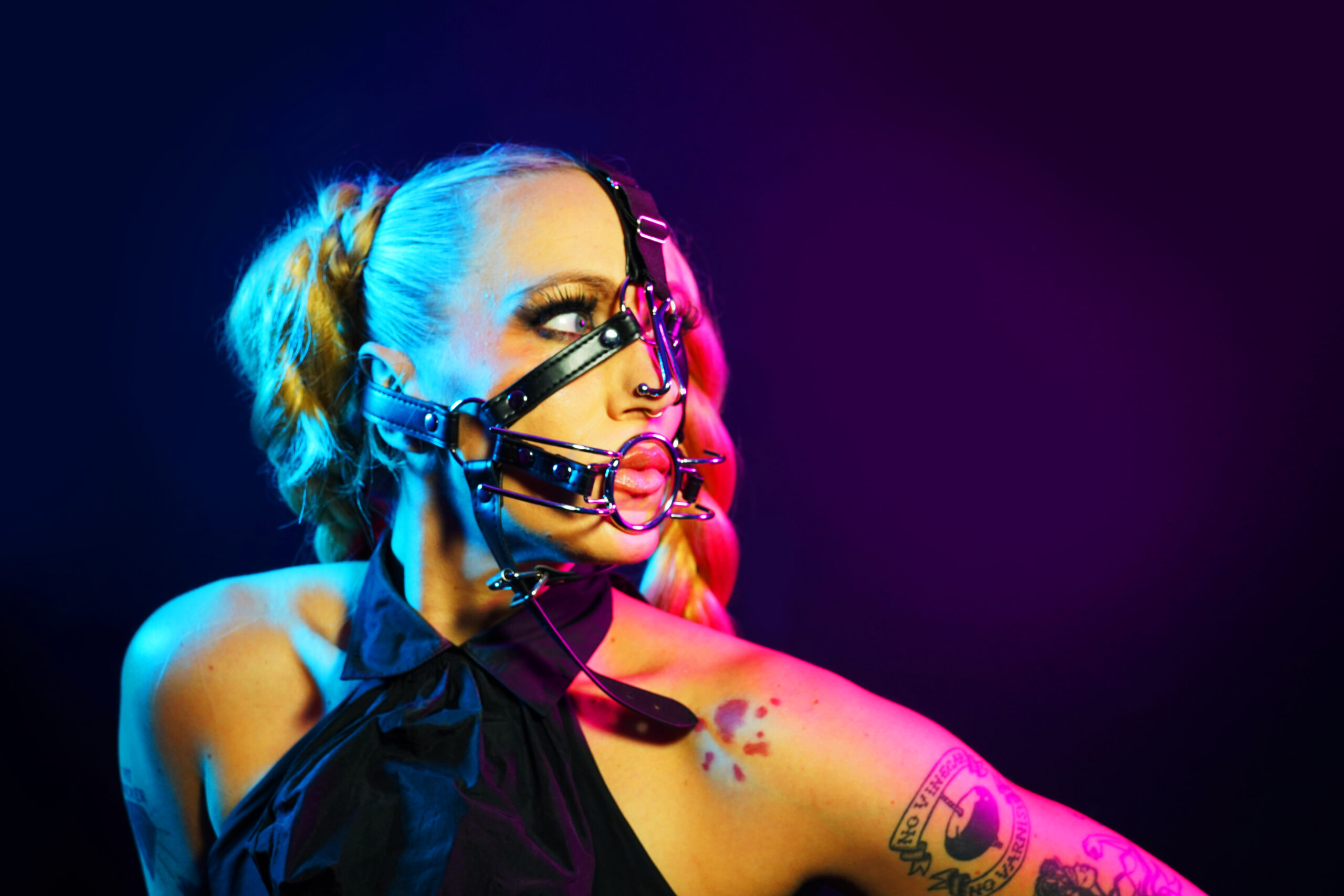Exploring Pansexuality And The Fluidity Of Sexual Attraction

Understanding Pansexuality

Pansexuality, a term that continues to gain visibility and understanding, encompasses a spectrum of sexual attraction that transcends traditional binary categories. It recognizes the fluidity of human desire and acknowledges that individuals may be attracted to people of any gender identity or expression. This exploration delves into the nuances of pansexuality, shedding light on its history, definitions, and the experiences of those who identify with this diverse sexual orientation.
Definition and Scope
Pansexuality is a sexual orientation characterized by romantic or sexual attraction to people regardless of their gender identity or expression. Unlike bisexuality, which typically refers to attraction to two genders (usually male and female), pansexuality encompasses a broader spectrum, including individuals who identify as transgender, non-binary, genderfluid, or any other gender identity. Pansexual individuals may be attracted to people of all genders, recognizing that gender is not a determining factor in their attraction.
Understanding pansexuality requires moving beyond rigid binary classifications and embracing the fluidity of human experience. It acknowledges that individuals’ attractions can evolve and change over time, and that gender is a complex and multifaceted aspect of identity.
The term “pansexuality” itself comes from the Greek words “pan” (meaning all) and “sexus” (meaning sex). crazy monkey position
Distinguishing from Bisexuality
Pansexuality is a sexual orientation characterized by romantic or sexual attraction to people regardless of their gender identity or expression. Unlike bisexuality, which typically refers to attraction to two genders (usually male and female), pansexuality encompasses a broader spectrum, including individuals who identify as transgender, non-binary, genderfluid, or any other gender identity.
Pansexual individuals may be attracted to people of all genders, recognizing that gender is not a determining factor in their attraction. For example, a pansexual person might be attracted to men, women, transgender people, non-binary people, and anyone else they find appealing, regardless of their gender identity.
It’s important to remember that sexual orientation is complex and personal, and individuals may experience and express it in diverse ways. While some pansexual individuals may have a clear understanding of their attraction from a young age, others may explore and understand their identities over time.
Historical Context
Pansexuality, a term gaining increasing recognition, describes a sexual orientation encompassing attraction to people regardless of their gender identity or expression. Unlike bisexuality, which often refers to attraction to two genders, pansexuality extends beyond this binary, acknowledging the diversity of human experiences and identities.
Historically, concepts similar to pansexuality have existed throughout various cultures and time periods. However, the term “pansexuality” itself emerged in the late 20th century, gaining traction within LGBTQ+ communities as a way to better define and articulate an expansive understanding of sexual attraction.
The fluidity of human desire is central to understanding pansexuality. It recognizes that individuals’ attractions can evolve and change over time, and that gender is not a fixed or defining element in who they are attracted to.
Fluidity of Sexual Attraction
Pansexuality is a sexual orientation defined by attraction to people regardless of their gender identity or expression. This inclusive definition extends beyond the traditional binary categories of male and female, embracing individuals who identify as transgender, non-binary, genderfluid, and any other gender identity. Pansexual individuals recognize that gender is not a determining factor in their attractions, acknowledging the fluidity and complexity of human desire. erotic party dresses
The Spectrum of Attraction
Pansexuality is a sexual orientation characterized by attraction to people regardless of their gender identity or expression. Unlike bisexuality, which often refers to attraction to two genders, pansexuality encompasses a broader spectrum, including individuals who identify as transgender, non-binary, genderfluid, or any other gender identity.
Pansexual individuals may be attracted to people of all genders, recognizing that gender is not a determining factor in their attraction. For example, a pansexual person might be attracted to men, women, transgender people, non-binary people, and anyone else they find appealing, regardless of their gender identity.
It’s important to remember that sexual orientation is complex and personal, and individuals may experience and express it in diverse ways. While some pansexual individuals may have a clear understanding of their attraction from a young age, others may explore and understand their identities over time.
Experiences of Change Over Time
Understanding pansexuality requires moving beyond rigid binary classifications and embracing the fluidity of human experience. It acknowledges that individuals’ attractions can evolve and change over time, and that gender is a complex and multifaceted aspect of identity.

Pansexuality is a sexual orientation defined by attraction to people regardless of their gender identity or expression. This inclusive definition extends beyond the traditional binary categories of male and female, embracing individuals who identify as transgender, non-binary, genderfluid, and any other gender identity. Pansexual individuals recognize that gender is not a determining factor in their attractions, acknowledging the fluidity and complexity of human desire.
The fluidity of sexual attraction is a significant aspect of pansexuality. Individuals may find themselves attracted to different genders at different points in their lives, or they might experience a consistent but evolving understanding of who they are attracted to.

It’s important to approach discussions about sexuality with sensitivity and respect for individual experiences.
Influence of Societal Norms
Pansexuality is a sexual orientation characterized by attraction to people regardless of their gender identity or expression. Unlike bisexuality, which often refers to attraction to two genders, pansexuality encompasses a broader spectrum, including individuals who identify as transgender, non-binary, genderfluid, or any other gender identity.
- Pansexual individuals may be attracted to people of all genders, recognizing that gender is not a determining factor in their attraction.
- For example, a pansexual person might be attracted to men, women, transgender people, non-binary people, and anyone else they find appealing, regardless of their gender identity.
- It’s important to remember that sexual orientation is complex and personal, and individuals may experience and express it in diverse ways.
Language and Representation
Language plays a crucial role in shaping our understanding of the world, including how we conceptualize and discuss complex social phenomena like sexuality. Within the realm of English, representations of pansexuality have evolved over time, reflecting both societal shifts and the ongoing quest for greater inclusivity and accurate representation.
Evolving Terminology
The evolution of terminology surrounding sexual orientation is a reflection of changing social norms and evolving understandings of human experience. In the past, discussions about sexuality often relied on rigid binary classifications, limiting the ways in which individuals could express their identities. aphrodisiac
With increased awareness and advocacy, language has become more inclusive, recognizing the diversity of human experiences. Terms like “pansexuality” have emerged as a way to encompass a broader spectrum of sexual attraction, moving beyond traditional limitations.
This shift in language reflects a growing recognition that gender is not a fixed or binary construct, and that individuals’ attractions may be influenced by a multitude of factors beyond simply male or female identity.
The use of more inclusive language is essential for creating a more just and equitable society, allowing individuals to express their identities authentically and fostering greater understanding and acceptance.
Media Portrayal and Visibility
Language plays a crucial role in shaping our understanding of the world, including how we conceptualize and discuss complex social phenomena like sexuality. Within the realm of English, representations of pansexuality have evolved over time, reflecting both societal shifts and the ongoing quest for greater inclusivity and accurate representation.
The evolution of terminology surrounding sexual orientation is a reflection of changing social norms and evolving understandings of human experience. In the past, discussions about sexuality often relied on rigid binary classifications, limiting the ways in which individuals could express their identities.
With increased awareness and advocacy, language has become more inclusive, recognizing the diversity of human experiences. Terms like “pansexuality” have emerged as a way to encompass a broader spectrum of sexual attraction, moving beyond traditional limitations.
This shift in language reflects a growing recognition that gender is not a fixed or binary construct, and that individuals’ attractions may be influenced by a multitude of factors beyond simply male or female identity.
The use of more inclusive language is essential for creating a more just and equitable society, allowing individuals to express their identities authentically and fostering greater understanding and acceptance.
Challenges in Communication
Language shapes our understanding of the world, including how we conceptualize sexuality. Within English, representations of pansexuality have evolved, reflecting societal shifts and the ongoing pursuit of inclusivity and accurate representation.
Historically, discussions about sexuality relied on rigid binary classifications, limiting expression. With increased awareness and advocacy, language has become more inclusive, recognizing the diversity of human experiences. Terms like “pansexuality” have emerged to encompass a broader spectrum of attraction, moving beyond traditional limitations.
This linguistic shift reflects a growing understanding that gender is not fixed or binary, and that attractions can be influenced by factors beyond male or female identity. Using inclusive language is crucial for creating a more equitable society where individuals can express their identities authentically and fostering greater understanding and acceptance.
Challenges and Support
Exploring pansexuality necessitates an examination of both the challenges and support systems available to individuals who identify with this diverse sexual orientation.
Stigma and Misunderstandings
Pansexual individuals may face various challenges, including societal stigma, lack of understanding from family or friends, and discrimination in areas like housing, employment, or healthcare.
Stigma surrounding pansexuality can stem from a lack of knowledge and awareness about this sexual orientation. Some people may hold misconceptions or prejudice against pansexual individuals, leading to negative stereotypes and harmful treatment.
Misunderstandings about pansexuality often arise from conflating it with bisexuality. While both orientations involve attraction to multiple genders, pansexuality encompasses a broader spectrum, including attraction to individuals regardless of their gender identity or expression.
Fortunately, there are growing support systems available for pansexual individuals.
Online communities and forums provide spaces for connection, sharing experiences, and finding support from others who understand their unique journeys. LGBTQ+ organizations and advocacy groups offer resources, education, and legal assistance to combat discrimination and promote equality.
Creating supportive environments involves educating oneself about pansexuality, challenging stereotypes and misconceptions, and treating all individuals with respect and dignity regardless of their sexual orientation.
Finding Community and Resources
Exploring pansexuality necessitates an examination of both the challenges and support systems available to individuals who identify with this diverse sexual orientation.
Pansexual individuals may face various challenges, including societal stigma, lack of understanding from family or friends, and discrimination in areas like housing, employment, or healthcare.
Stigma surrounding pansexuality can stem from a lack of knowledge and awareness about this sexual orientation. Some people may hold misconceptions or prejudice against pansexual individuals, leading to negative stereotypes and harmful treatment.
Misunderstandings about pansexuality often arise from conflating it with bisexuality. While both orientations involve attraction to multiple genders, pansexuality encompasses a broader spectrum, including attraction to individuals regardless of their gender identity or expression.
Fortunately, there are growing support systems available for pansexual individuals.
Online communities and forums provide spaces for connection, sharing experiences, and finding support from others who understand their unique journeys. LGBTQ+ organizations and advocacy groups offer resources, education, and legal assistance to combat discrimination and promote equality.
Creating supportive environments involves educating oneself about pansexuality, challenging stereotypes and misconceptions, and treating all individuals with respect and dignity regardless of their sexual orientation.
Self-Acceptance and Exploration
Exploring pansexuality necessitates an examination of both the challenges and support systems available to individuals who identify with this diverse sexual orientation.
Pansexual individuals may face various challenges, including societal stigma, lack of understanding from family or friends, and discrimination in areas like housing, employment, or healthcare.
Stigma surrounding pansexuality can stem from a lack of knowledge and awareness about this sexual orientation. Some people may hold misconceptions or prejudice against pansexual individuals, leading to negative stereotypes and harmful treatment.
Misunderstandings about pansexuality often arise from conflating it with bisexuality. While both orientations involve attraction to multiple genders, pansexuality encompasses a broader spectrum, including attraction to individuals regardless of their gender identity or expression.
Fortunately, there are growing support systems available for pansexual individuals.
- Online communities and forums provide spaces for connection, sharing experiences, and finding support from others who understand their unique journeys.
- LGBTQ+ organizations and advocacy groups offer resources, education, and legal assistance to combat discrimination and promote equality.
Creating supportive environments involves educating oneself about pansexuality, challenging stereotypes and misconceptions, and treating all individuals with respect and dignity regardless of their sexual orientation. vibrators
Find the full story on the blog
Browse the complete post
- Longline Bras for a Sculpted Look and Bedroom Appeal - September 8, 2025
- The evolving conversation on pansexuality and its impact on romantic love - September 8, 2025
- Rear Admiral – Best Rear Entry Sex Positions - September 8, 2025
